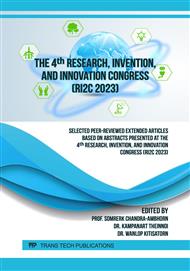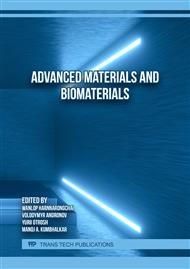p.3
p.17
p.25
p.33
p.39
p.47
p.57
p.65
Role of Pineapple Leaf Microfiber (PALMF) in PALMF-Filled Polyurethane Composites for Sustainability
Abstract:
Polyurethane (PU) composites reinforced by pineapple leaf microfiber (PALMF) for performance and sustainability are introduced, prepared and comprehended in the study. For PU composites, PALMF quantity is varied at 0.5, 1, 1.5, 2, 3, 5, 10 and 15 weight%. Role of the PALMF content in PU composite properties is elucidated. Attenuated total reflection-Fourier transform infrared spectroscopy (ATR-FTIR) technique is used to probe local hydrogen-bonding arrangement between polymer chains. Differential scanning calorimetry (DSC) is utilized for investigating thermal properties of these prepared PU composites. Dynamic mechanical property of each sample is also measured by using dynamic mechanical analyzer (DMA).
Info:
Periodical:
Pages:
33-38
Citation:
Online since:
October 2023
Authors:
Price:
Сopyright:
© 2023 Trans Tech Publications Ltd. All Rights Reserved
Share:
Citation:



